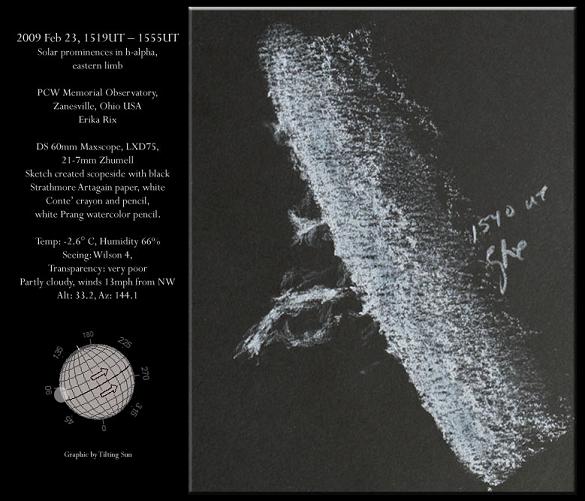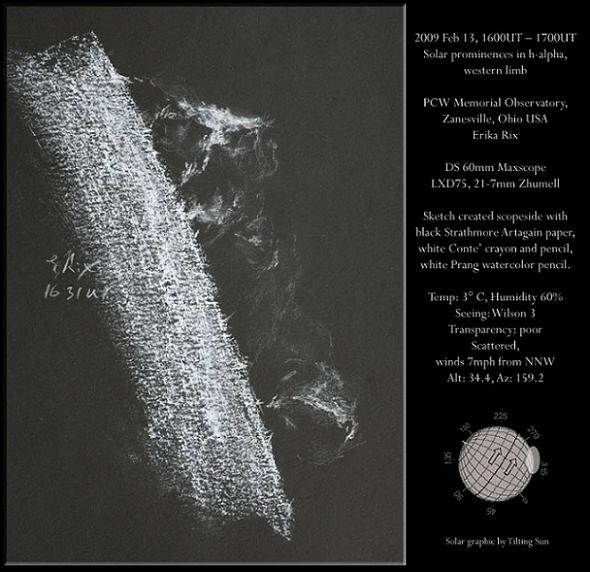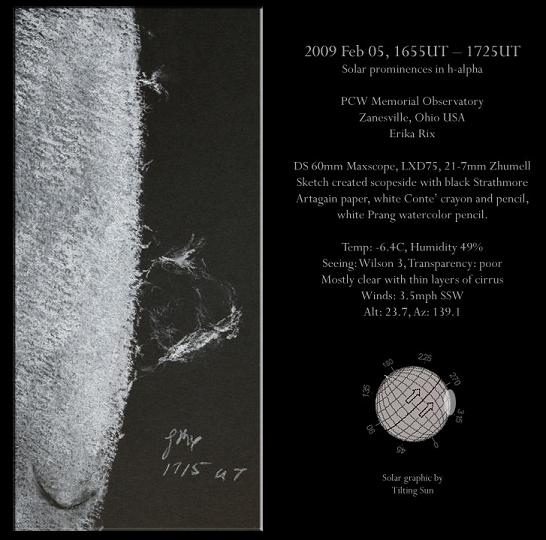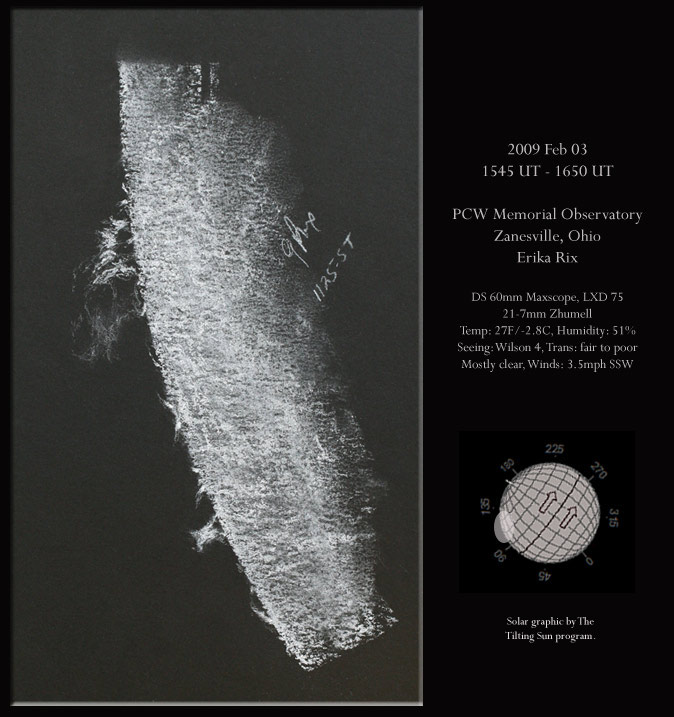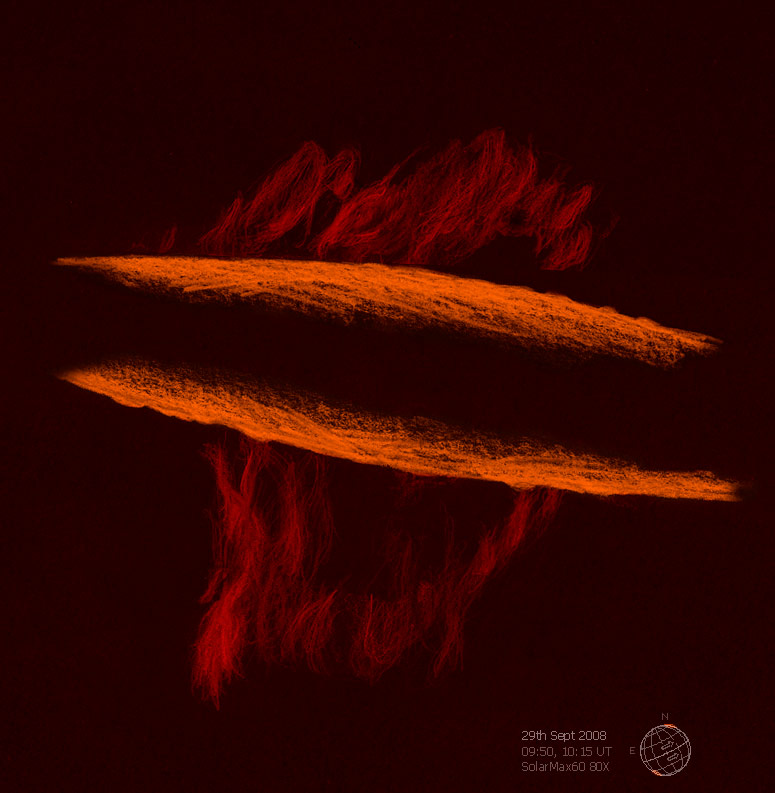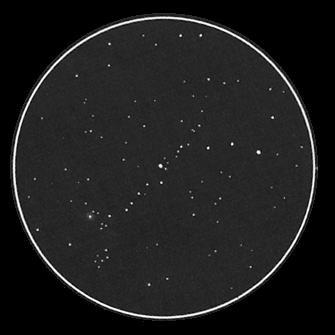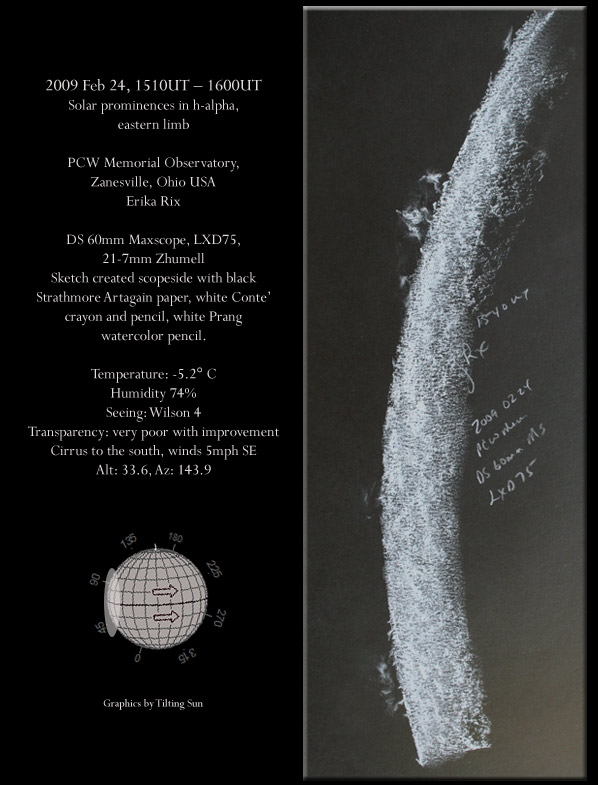
Solar Prominences in H-alpha Eastern Limb
Sketch and Details by Erika Rix
2009 Feb 24, 1510UT – 1600UT
Solar prominences in h-alpha, eastern limb
PCW Memorial Observatory, Zanesville, Ohio USA
Erika Rix
DS 60mm Maxscope, LXD75, 21-7mm Zhumell
Sketch created scopeside with black Strathmore Artagain paper, white Conte’ crayon and pencil, white Prang watercolor pencil.
Temp: -5.2° C, Humidity 74%
Seeing: Wilson 4, Transparency: very poor with improvement
Cirrus to the south, winds 5mph SE
Alt: 33.6, Az: 143.9
The eastern hemisphere, especially east to the northeast, was scattered with prominences. As transparency improved, details of these little prominences came to light. The most obvious set was around 90° position angle and then a squat hedgerow one around 40°. I stopped my first sketch midway and began a fresh one with a larger limb span to include the majority of them, most which were faint and whispy or very tiny.
I counted 8 more small slender ones that weren’t included in this sketch. I’m sure that given a little more time (or perhaps ambition to stay out there longer) the improvement in transparency would have revealed a few more. There was a very sharp small plage about 20 degrees in from the north limb as well as a few very hair-like filaments, particularly west, south, and east. It is reported by another solar observer that there are two new spots in that same location, indicating a new AR.


